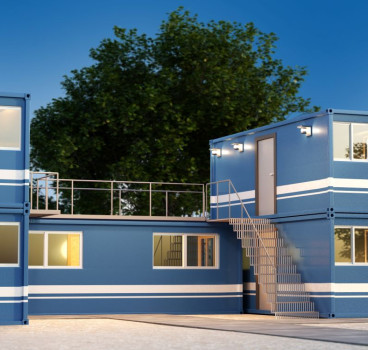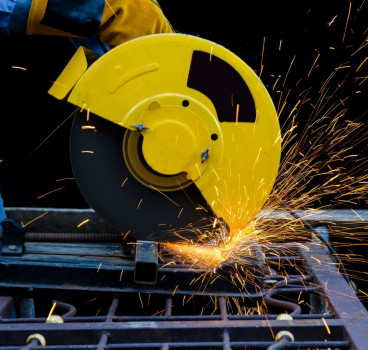How engineers and designers are transforming the world of bridge building
Bridges have served as crucial connectors for centuries, fostering trade, facilitating travel, and symbolising progress. Today, the field of bridge building is experiencing a renaissance, driven by innovative technologies that promise stronger, more sustainable, and even aesthetically pleasing structures, writes John Ridgeway
Traditional steel and concrete are getting a high-tech makeover. Ultra-High-Performance Concrete (UHPC) boasts five times the compressive strength of conventional concrete, enabling slimmer designs and longer spans. The Sunshine Sky Bridge in China, spanning 73 m with a width of only 2.6 m, exemplifies its potential.
Additionally, self-healing concrete embedded with bacteria heals hairline cracks, reducing maintenance costs and extending bridge life. An example is the Zuid-Bevelandbrug in the Netherlands, the first bridge globally to utilise this technology. We are also seeing the rise of robotics, 3D printers, the growing use of sensors – and of course a variety of new green solutions, nano technology, modular construction and much more.
High performance concrete
UHPC exhibits enhanced resistance to weathering, erosion, and de-icing salts, contributing to a longer lifespan and reduced maintenance costs. This makes it ideal for challenging environments such as coastal regions or areas with harsh winters. Its finer particle size and high strength enable sleek and elegant designs, previously impossible with standard concrete.
We have spoken about the Sunshine Sky Bridge in China. Similarly, the Kanno River Bridge in Japan used UHPC for its deck slab, this bridge achieved a record-breaking span of 89 metres, demonstrating the material's potential for larger structures.
The Catharina Bridge in the Netherlands was designed with a focus on aesthetics and sustainability. This bridge used UHPC for its slender arch and deck, creating a visually striking and environmentally friendly landmark.
Self-Healing Concrete
This innovative material incorporates bacteria that produces calcium carbonate when exposed to water and air, filling hairline cracks and promoting auto-healing. This offers several benefits such as reduced maintenance. By repairing minor cracks, self-healing concrete reduces the need for frequent repairs and associated costs. By preventing cracks from progressing and leading to larger structural issues, this technology can also significantly extend the bridge's lifespan. The self-healing process further contributes to improved resistance to water infiltration and corrosion, enhancing the concrete's durability.
As already mentioned, the Zuid-Bevelandbrug in the Netherlands, holds the distinction of being the first globally to utilise self-healing concrete in its construction. Monitoring data suggests successful crack healing is paving the way for wider adoption of this technology.
Robotics and 3D printing
Automation is also making its mark on bridge construction. Robotic arms perform repetitive tasks like welding and painting with improved accuracy and reduced risk. The New Champlain Bridge in Montreal employed robots for welding, enhancing safety and efficiency. 3D printing is also on the scene, creating intricate components and even entire bridge sections. MX3D in Amsterdam showcases the world's first 3D-printed metal bridge, demonstrating its potential for complex geometries and on-site fabrication.
3D printing brings incredible design freedom and on-site manufacturing capabilities to bridge construction. It allows for the creation of intricate and bespoke structural elements, previously impossible with traditional methods. Printing bridge components on-site reduces transportation costs and minimises environmental impact. 3D printing also uses less material compared to traditional manufacturing, potentially leading to more sustainable structures.
Robots are also getting in on the act. They offer unparalleled precision, significantly reducing errors and ensuring structural integrity. This is crucial for critical welds and intricate components. By automating hazardous tasks like welding and painting, robots minimise the risk of accidents and injuries for human workers. Robots can also work tirelessly, performing repetitive tasks at a consistent pace, leading to faster construction times and reduced costs.
Sensors
Bridges are becoming smarter with the integration of sensors. Embedded sensors monitor structural health, detecting stress, strain, and potential damage. This allows for predictive maintenance, preventing catastrophic failures. The Golden Gate Bridge in San Francisco (pictured) is undergoing a large-scale sensor installation project for enhanced monitoring. Additionally, wind farms are incorporating dynamic sensors to optimise energy production and withstand extreme weather events.
Sensors measure how much force the bridge experiences, allowing engineers to identify potential weaknesses and overloading. Monitoring vibrations helps detect issues like cracks or loose connections before they become major problems. Sensors further track temperature, humidity, and wind loads, enabling proactive measures to protect the bridge from damaging conditions.
The benefits of predictive maintenance may seem obvious. Early detection of issues allows for timely repairs, averting costly and potentially life-threatening bridge collapses. By identifying and addressing problems before they worsen, sensor-based systems can optimise maintenance schedules and avoid unnecessary interventions. Proactive maintenance ensures the bridge remains in good condition for longer, saving on costly replacements.
Greener bridges
Bridges are also embracing green practices. Timber bridges utilise sustainably sourced wood, offering a lower carbon footprint and aesthetic appeal. The Argenbrücke in Switzerland, boasting the world's longest timber arch bridge, is a stunning example.
Wood uses less embodied carbon compared to steel and concrete, resulting in a smaller environmental impact throughout its lifecycle. Utilising certified and responsibly harvested timber ensures responsible forest management and reduces deforestation. Wood also offers a natural warmth and visual beauty, blending seamlessly with natural landscapes and urban environments.
Prefabricated Bridges
Prefabrication is not just about speed - it's about building smarter and greener. By constructing bridge elements off-site in controlled environments, less material is wasted compared to traditional on-site construction. Prefabrication avoids extensive on-site work, reducing noise, dust, and traffic congestion, benefiting surrounding communities. Prefabricated elements can also be quickly assembled on-site, leading to shorter construction times, minimising environmental impact.
The Yichang Expressway Bridge, China, was constructed in a record-breaking 43 hours, demonstrating the speed and efficiency of prefabrication. It utilised prefabricated steel components, minimising waste and disruption.
Bridging the Future
Nature offers a wealth of inspiration for engineers seeking to build stronger, lighter, and more efficient bridges. Studying insect wings, spiderwebs, and bone structures is leading to new designs that optimise strength-to-weight ratio and resilience. Bio-inspired materials like biocomposites combine the strength of traditional materials with the sustainability of natural fibres. Drawing inspiration from natural self-healing mechanisms can also lead to bridges that can "fix" themselves, reducing maintenance needs.
The Dragonfly Bridge in Spain, employs a bio-inspired design resembling a dragonfly wing, achieving both lightness and strength.
Nanotechnology - Building with Atoms
The realm of nanotechnology also holds immense potential for revolutionising bridge construction. Imagine bridges coated with nanoparticles that repel dirt and pollutants, reducing maintenance and enhancing aesthetics. Nanoparticles can be embedded in materials to autonomously repair cracks and micro-damage, extending bridge lifespan. Ultra-sensitive nanosensors can also be integrated into bridges for real-time monitoring of stress, strain, and environmental conditions.
Modular Bridges
Modular bridges offer exciting possibilities for disaster response and efficient construction. Pre-fabricated bridge modules can be quickly assembled on-site, providing crucial infrastructure after natural disasters. Modular designs simplify construction, requiring less specialised equipment and manpower, especially beneficial in remote areas. Modular bridges can also be easily reconfigured or relocated, offering versatility for changing needs.
These are just a few of the many advancements transforming the world of bridge building. With these innovations, we can expect bridges that are stronger, smarter, and more sustainable, connecting communities and fostering progress for generations to come.
Sources:
- Federal Highway Administration: https://highways.dot.gov/research/structures/ultra-high-performance-concrete/deployments
- Ultra-High Performance Concrete Network: https://www.regcytes.extension.iastate.edu/uhpc/
- Hi-Con - Slim and durable bridges in Ultra High Performance Concrete: https://www.hi-con.com/
- Bioengineered Bacterial Concrete for Self-Healing Durability: https://www.sciencedirect.com/science/article/pii/S2214785321080044
- Self-Healing Concrete for Sustainable Infrastructure: https://www.researchgate.net/publication/270188811_Robust_Self-Healing_Concrete_for_Sustainable_Infrastructure
- Zuid-Bevelandbrug - Rijkswaterstaat: https://en.wikipedia.org/wiki/Zuid-Beveland
- Bio-Inspired Bridge Design: Lessons from Nature: [[https://www.structuremag.org/?p=19992]]
- Biomimetic Construction for Sustainable Infrastructure: [[https://www.technostruct.com/blog/2019/01/13/bim-construction-exoskeleton-by-ekso-bionics/]]
- The Dragonfly Bridge - NEXT Engineering: [[https://www.dailymail.co.uk/sciencetech/article-4767716/Incredible-futuristic-bridge-transform-shape.html]]
- Nanotechnology in Bridge Construction: [[https://www.researchgate.net/publication/264626887_Nanotechnology_and_Its_Impact_on_Construction_Bridging_the_Gap_Between_Researchers_and_Industry_Professionals]]
- Self-Healing Concrete with Nanoparticles: [[https://www.sciencedirect.com/science/article/pii/B9780081026410000037]]
- Nanotechnology for Infrastructure Systems: [[https://www.nano.gov/]]
- Modular Bridges for Disaster Relief: [[https://www.ncbi.nlm.nih.gov/pmc/articles/PMC10172674/]]
- The Advantages of Modular Bridges: [[https://acrow.com/about-us/why-acrow/]]
- Acrow Bridge - Modular Bridge Solutions: [[https://acrow.com/]]
Additional Blogs

How Does OSHA and HSE Enforce Their Standards?
The Occupational Safety and Health Administration (OSHA) and its U.K. counterpart, the Health and Safety Executive (HSE), are the primary bodies governing workplace safety. Their role is to reduce...
Read moreIs modular construction suffering from an identity problem?
Modular construction has been hailed as the future of the building industry for more than a decade. Promises of speed, efficiency, reduced waste and improved quality have made it a go-to headline...
Read more

The small innovations helping to transform construction
Construction’s biggest stories tend to revolve around landmark buildings, major digital breakthroughs, or the occasional crisis that pushes the industry into the headlines. Yet much of the sector’s...
Read more